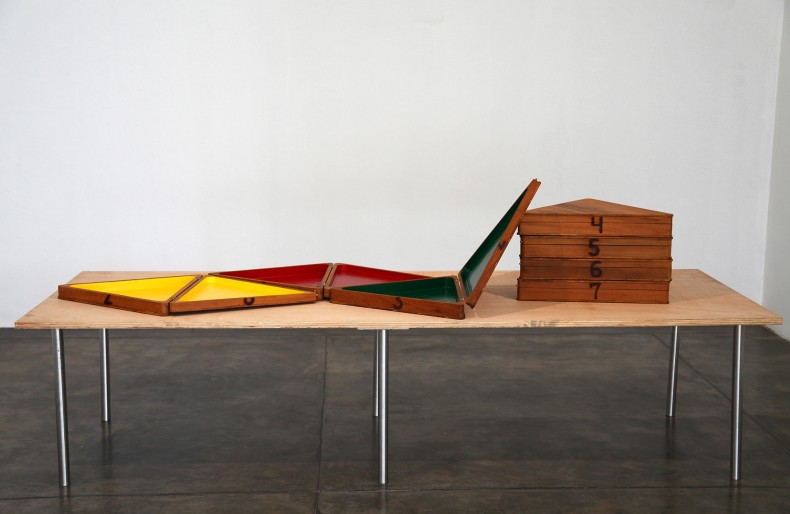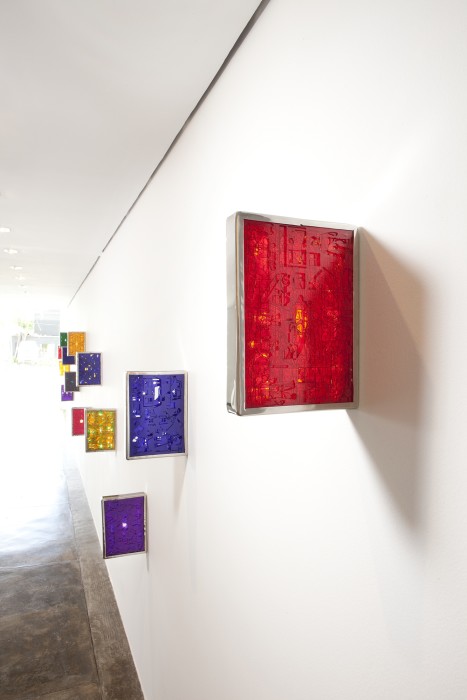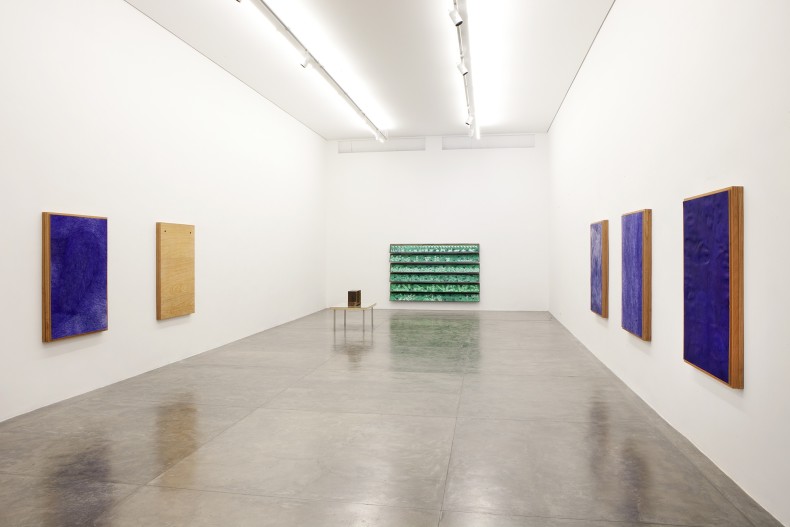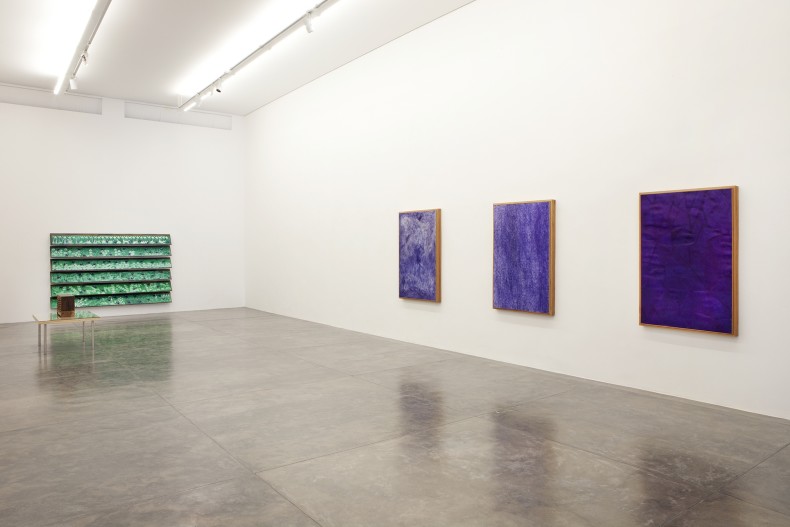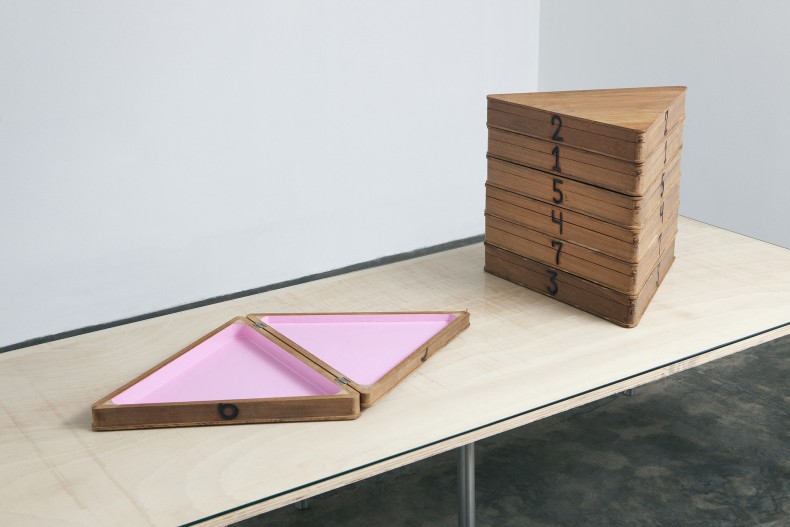Nara Roesler Gallery presents Marcelo Silveira’s show Chronos, which will open on March 22nd. It is the fifth individual exhibition by this Pernambuco-born artist at the gallery, where he also exhibited Arquitetura de Interiores, in 2008.
Marcelo Silveira presents four pieces that take over different spaces of the gallery and mix several techniques and materials. “His work, full of constructions that move physically, is mainly characterized by bringing about constant displacement of meanings. Once more, the means used and the suggested nexuses blend together in the works presented in this show, which offers the visitor the experience of building new relations based on the contact with the artist’s pieces”, explains Moacir dos Anjos – who was the curator of the last São Paulo International Biennial – in his critical text about the exhibition.
In his nearly 30-year career, Silveira has excelled in the scene by creating pieces that question pre-established categories, defy and challenge consolidated notions about sculpture and installation. Recently, the artist has had important participation in collective exhibitions, such as the 29th São Paulo International Biennial (2010); Panorama of Brazilian Art (MAM/ São Paulo); 4th Valencia Biennial (2007); and Geração da Virada 10+1, at Instituto Tomie Othake (2006). He also presented individual shows at Nara Roesler Gallery (2000, 2003, 2006 and 2008), at the 5th Mercosul Biennial (Porto Alegre, 2005); at Mariana Moura Gallery (Recife, 2006); and Paço Imperial museum (Rio de Janeiro, 2003).
In Chronos, Marcelo Silveira presents four installations: Caleidoscópio, 2011-2012, which is composed by thick rectangular frames – made out of shiny and crude steel and with no front or back faces – that surround a large number of equal-sized colored translucent acrylic plates, which are grouped in layers that form a block that is thick enough to almost fully obstruct the light that shines on them. They are cut out in a way they create abstract, geometric and everyday figures, such as toys, vehicles and people.
The second work, Cuco (Livro da semana), 2010-2011, is a limited-run publication created with stencil, which the artist considers to be “a facilitator of the process of drawing and easily found in any school supplies store”. On the thinnest sides of seven wooden boxes that stand together on one single horizontal drawer, the names of the seven days of the week are written in high-relief. Each one of these chapters has a different color and is comprised of six stripes of paper folded sixteen times; each measures 2.6 meters when unfolded. “All those drawings were inside the box that corresponds to the day of the week we are on and there are more sets of drawings inside the other boxes and they are all ready to be displayed on that same place on the other days of the week”, explains Moacir dos Anjos.
Criação do Mundo, 2012, which defies the limits between drawing and painting, is comprised of huge cedar boxes attached to the wall. They frame white pieces of paper with sinuous abstract lines made with a blue ballpoint pen. Finally, Sinuca, 2012, is comprised of seven triangular boxes based on a reproduction of a piece found at a thrift shop in Recife, city where the artist lives. To each box is assigned the number and the color of each ball that is used in the game after which the piece is named. By doing this, the artist repeats his procedure of exhibiting only part of what was created; therefore, he symbolically holds back an excess or a reserve of the possible meanings contained in each piece.


